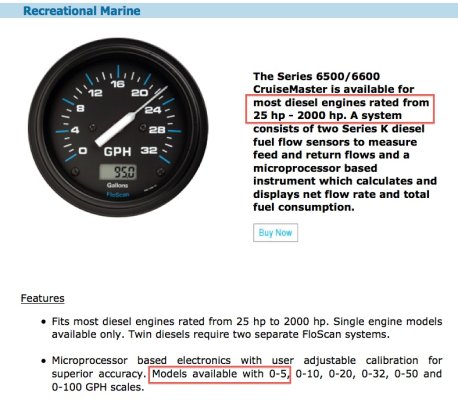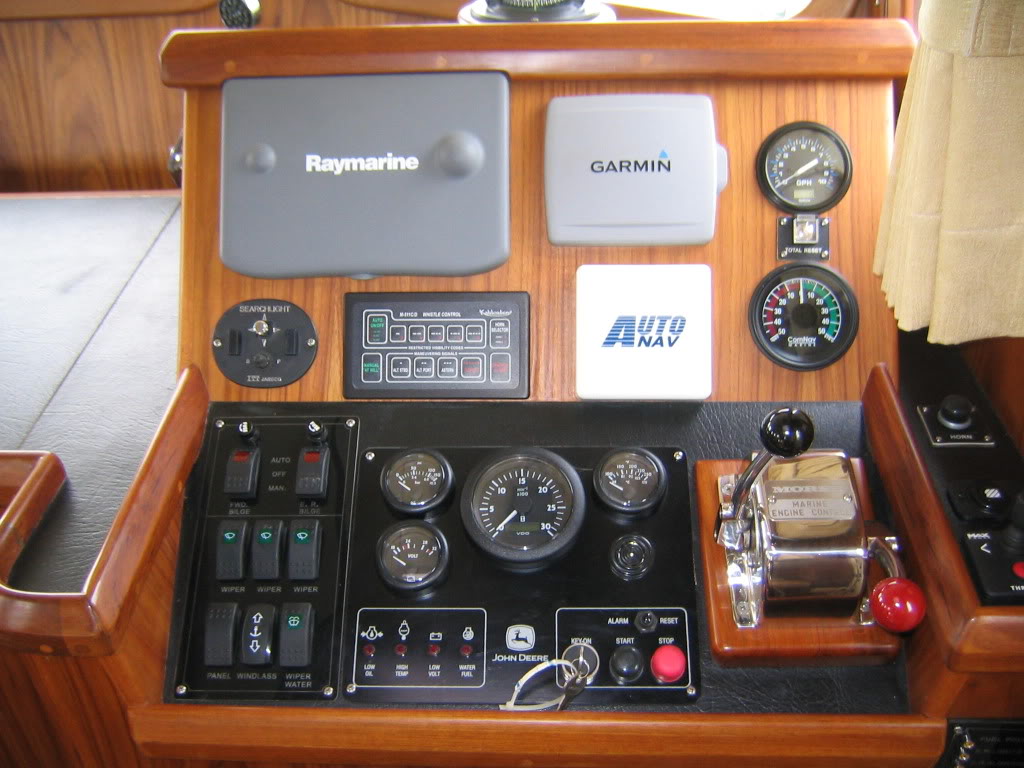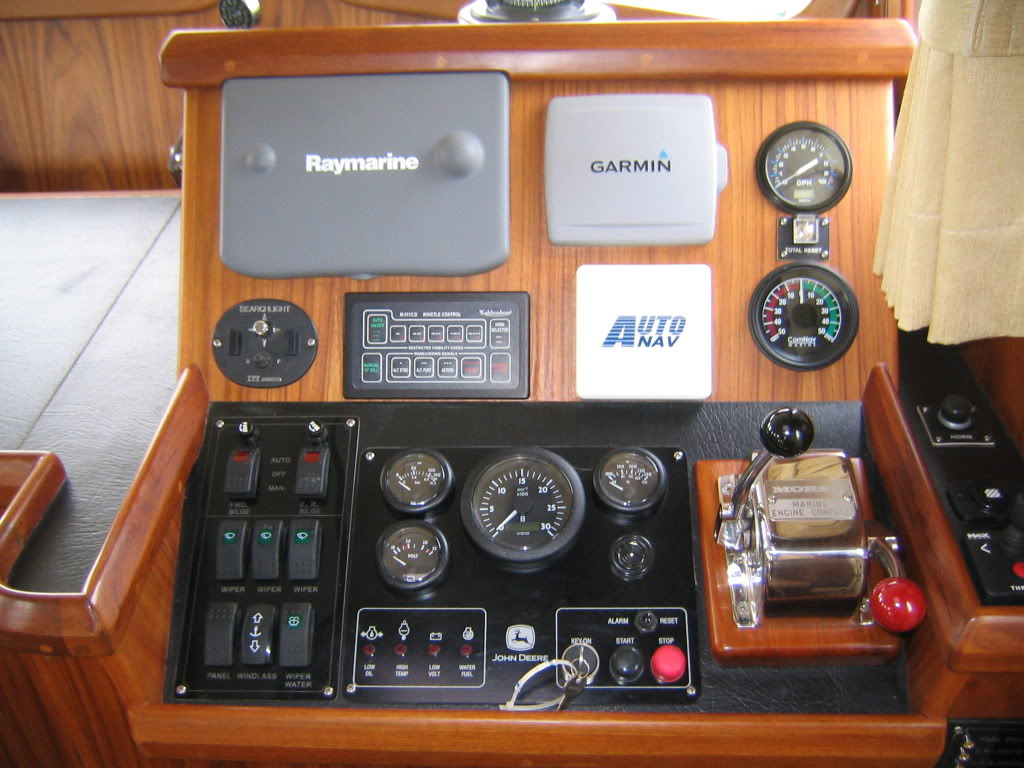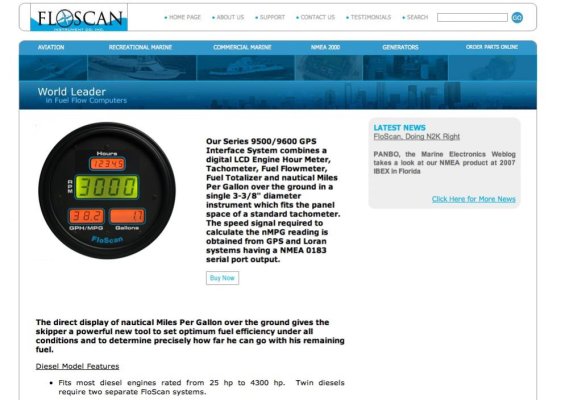AKDoug
Guru
I have always had a gas engine, it drank lots of fuel so the flowmeter worked well and had a totalizer for gallons consumed. Kind of a double safety for not running out of fuel. My new boat has a Yanmar 4JH3E and the fuel consumption should be in the liters per hour range. The question would be Is There a Flowmeter that will read flows that low? What does everyone with a small engine do to compute fuel consumption? Do you just measure your tankage and shoot for an average? I understand the diesel engine also bypasses a quantity of fuel back into the tank as part of the process. Wanting to know before I get there...







